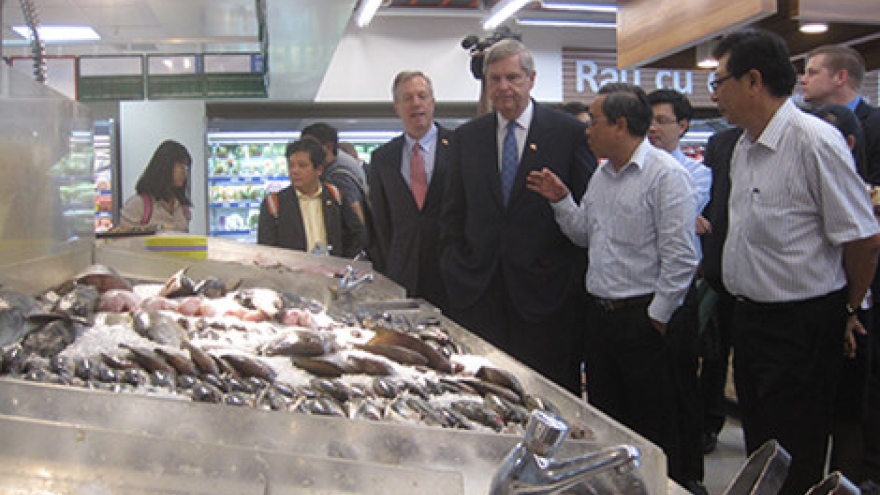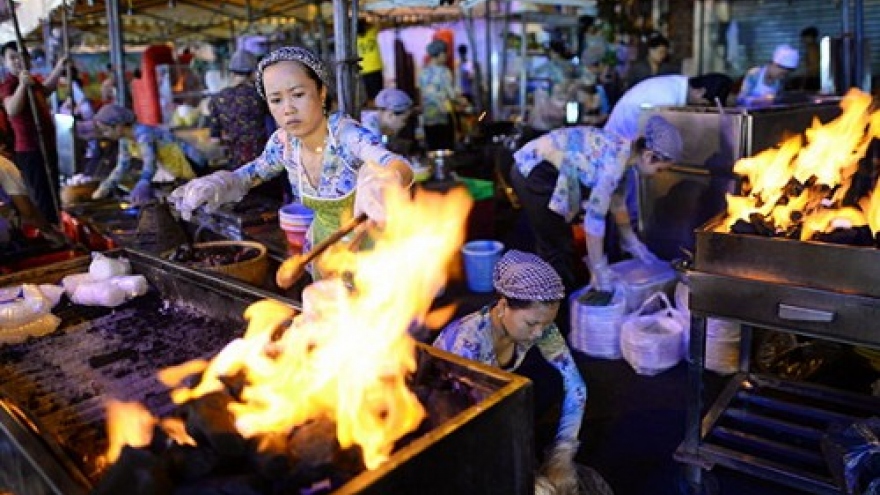Vietnam plans to develop safe food sources: MIT
Vietnam will have 1,300 supermarkets and more than 300 commercial centres in the next 10 years, making an important channel for people to access to safe food sources, said the Ministry of Industry and Trade (MIT).
 |
The ministry's Domestic Market Department said the goods sold at traditional markets have accounted for 40% of the country's total goods circulation.
The rate of fresh food accounted for nearly 70% at traditional markets. Around 60% of supermarkets in the country have been selling food.
The department said most of food sold at supermarkets have clear origin certificates or are sealed with food safety while those at traditional markets have seen risks of untested food.
Le Viet Nga, the department's deputy director told online newspaper plo.vn that the modern distribution channels had been an effective solution for consumption of safe agricultural production models.
The development of supermarket networks nationwide would play an important role in developing trade infrastructure to ensure food safety, Nga said.
She said that the ministry had approved the master plan for the development of markets, supermarkets and commercial centres in the country with an aim to develop a synchronous markets network. The plan aimed to promote circulation of goods, thus enhancing the processing and manufacturing sector as well as the agricultural sector.
She added that the modern distribution channels would see strong development in the next five years.
The department forecast that the amount of agro-forestry and fishery products sold through modern distribution channels would account for 40 percent of the country's total market shares.
She said the management of traditional markets had been a big issue for the ministry.
The biggest difficulty for the building of distribution channel chains is the shortage of capital in rural areas, as much as 76% out of 8,660 traditional markets were in these areas. In addition, 86% of the total traditional markets have weak infrastructure.
For example, the pilot project on food safety traditional markets model under the national programme on food safety has been halted after implementation in 32 localities out of the country's total 63 localities due to a lack of capital.
In the 2011-15 period, the Government spent VND14.5 billion (US$645,000) to build the food safety markets. However, the spending was modest in comparison with the total expected amount of VND100 billion.
The ministry said the model had increased people's awareness on the business of food safety.
Statistics from the ministry showed that there have some big modern distribution channels in the country such as Metro with 19 units, Big C with 32 units, and Vinmart+ with over 400 units.


